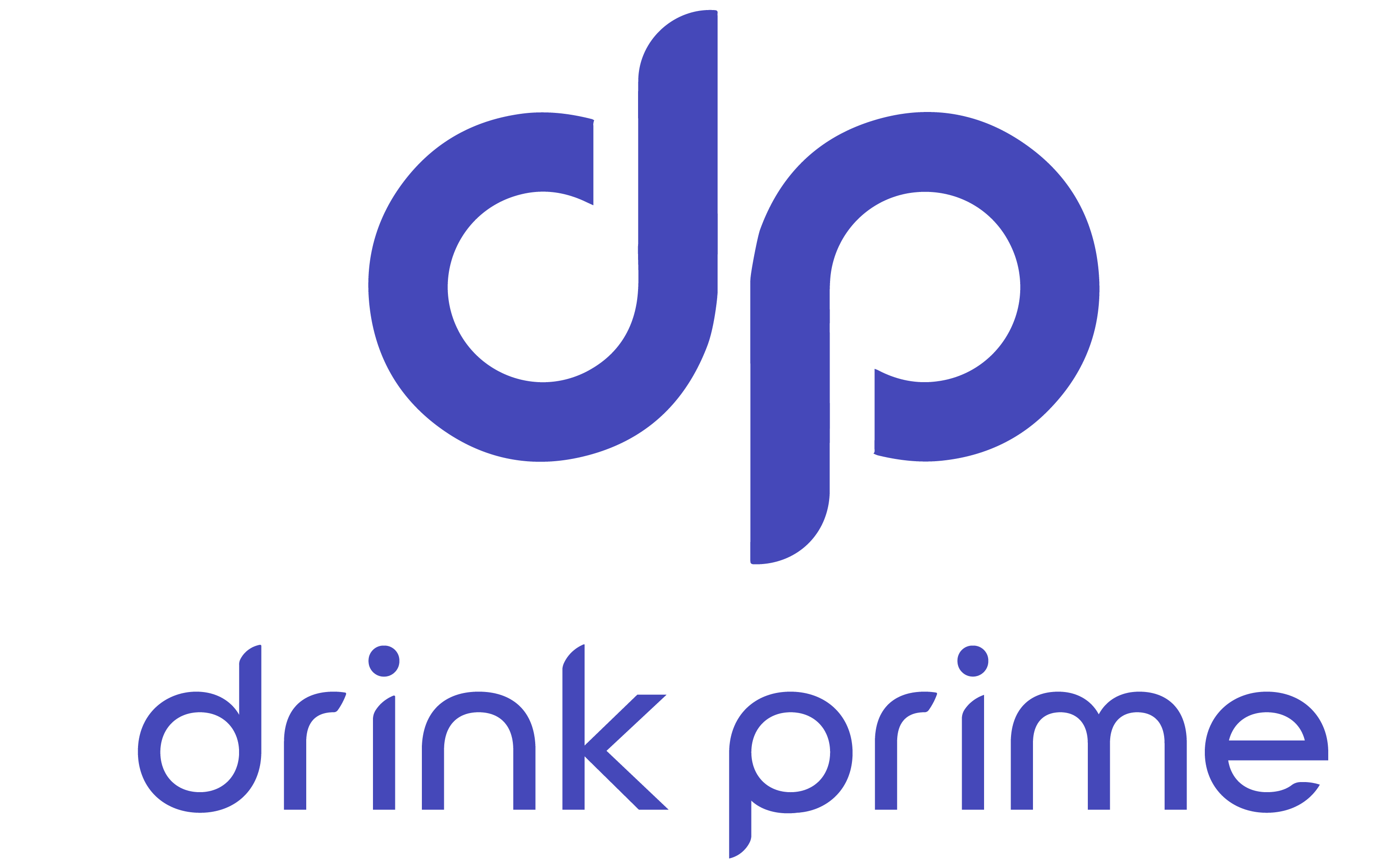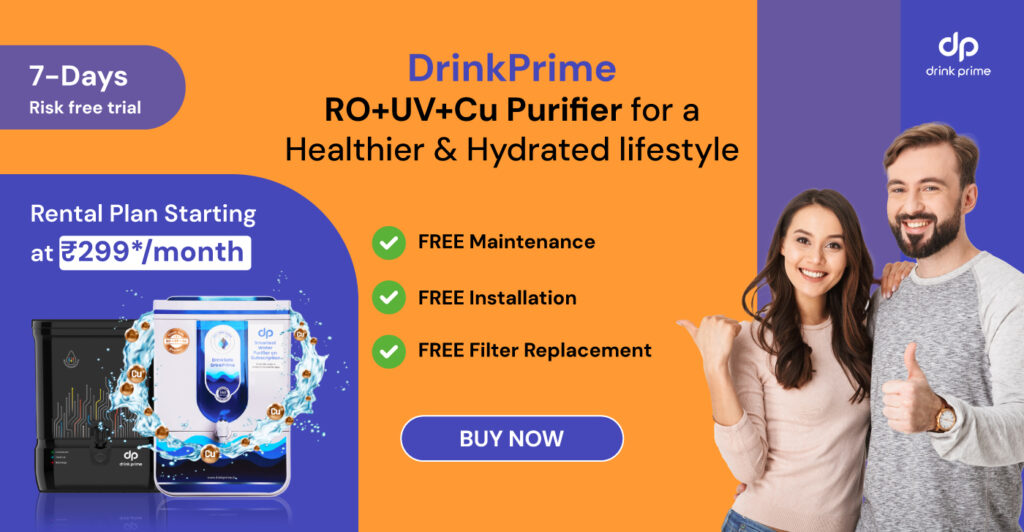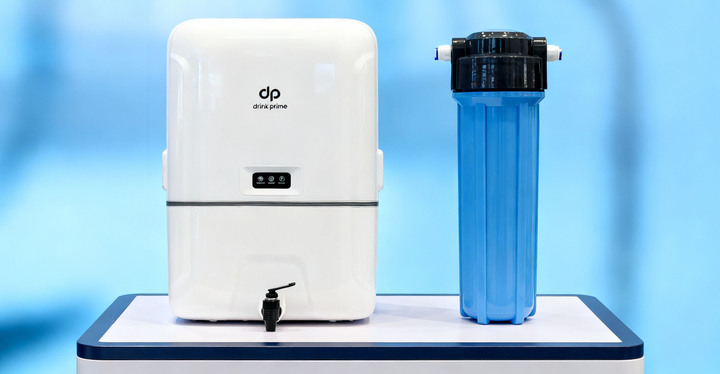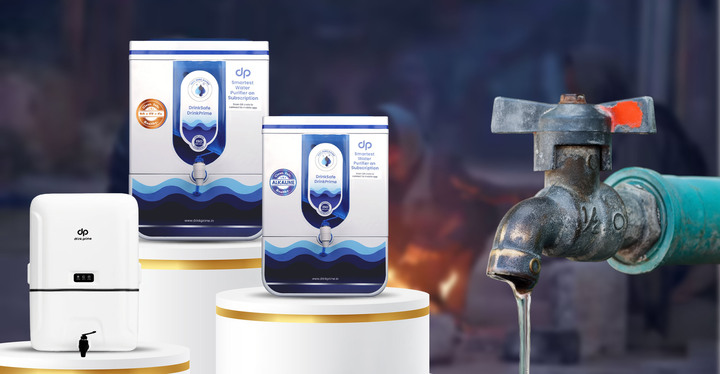It is a sad reality of modern times that, despite the modern world having developed by leaps and bounds in the last century, access to safe and healthy drinking water is a privilege that is available to only a part of the population. Besides the ever-increasing pollution of water bodies and indiscriminate use of chemicals, the tap water available to you may lead to a host of health issues if consumed without any proper filtration.
But with so many options present in the market, selecting the right water purifier can be confusing at times. In this blog, we’ll break down the pros and cons of different types of water purifiers to help you make an informed decision. Plus, we’ll introduce you to how DrinkPrime makes your decision even easier by offering customized solutions for your water needs.
Types of Water Purifiers
1. Reverse Osmosis
Reverse Osmosis water purifiers are considered to be one of the safest and most widely used water purifiers that are available today in the market. Let’s understand the pros and cons of RO water purifiers.
Pros:
RO purifiers remove most of the pathogens and contaminants, thus giving you access to safe drinking water. It also improves the taste of water and is convenient to use after the initial installation, making it easy for you to use it in your day-to-day life.
Cons:
They are more expensive, so they may not fit your budget requirements. It wastes a lot of water in the process of filtration and is not the most environmentally friendly option. Sometimes it may remove the required minerals during purification, thus stripping your water of essential minerals. It may also require frequent maintenance.
2. UV (Ultraviolet) Water Purifiers
This method, though not very popular, is effective as it uses UV radiation to destroy harmful pathogens present in the water. Its rate of effectiveness is very high as it destroys most microorganisms and bacteria.
Pros: UV lamps efficiently kill bacteria, viruses, and pathogens, and there is no change in the natural taste or smell of water.
Cons: This is an expensive system and does not remove heavy metals, so it is best used along with other purification methods.
3. Activated Carbon Water Purifiers
Also known as charcoal filters, this is one of the most popular types of water purifiers available in the market today. It uses a process called adsorption, using which the activated carbon removes all the impurities from the water. It acts as a sort of magnet by which all the toxic particles attach themselves to the activated carbon, letting the filtered water pass through. They are typically suited for smaller units like residential places.
Pros: Activated carbon filters are good at improving taste and removing chlorine and all the organic compounds. Also, it is affordable and easy to maintain.
Cons: The major disadvantage is that it does not remove microbes or any dissolved impurities, and moreover, it needs frequent filter replacements.
4. UF (Ultrafiltration) Water Purifiers
This method, though not very popular, is effective as it uses UV radiation to destroy harmful pathogens present in the water. Its rate of effectiveness is very high as it destroys most microorganisms and bacteria.
Pros: UF or ultrafiltration water purifiers work without electricity, and they also remove bacteria and cysts. Besides, it is suitable for areas with low TDS and other biological contaminants.
Cons: With UF, it is not effective for hard or chemically contaminated water.
What DrinkPrime Offers, and Why You Should Choose It?
When it comes to finding the perfect balance between purification and health benefits, DrinkPrime has you covered.
Alkaline Water Purifier
DrinkPrime’s alkaline water purifier not only makes sure that the water is purified but also infuses all the essential minerals that help in balancing the body’s pH. Besides, if you are looking for water that boosts hydration, immunity, and overall well-being, that alkaline water purifier is the best choice.
Copper Water Purifiers
DrinkPrime combines ancient wisdom with all the modern technologies and infuses the perfect amount of copper into filtered water to deliver health benefits without the risk of over exposure.
RO+ Water Purifier
Additionally, with the help of the DrinkPrime RO+ water purifier, it removes all the harmful contaminants while restoring all the essential minerals like calcium and magnesium, hence giving you healthier, tastier water with the perfect balance of purification and mineral retention.
DrinkPrime personalised the water purifier solution based on your area’s water quality. So whether you need more filtration, mineralisation, or copper infusion, the DrinkPrime water purifier is built for your needs. Also, with a subscription model, you don’t need to worry about upfront costs, maintenance, or filter replacement.
Get 7 Days Risk Free Trial
Conclusion
In summary, selecting the right water purifier can feel like a challenging task, but understanding the pros and cons of each type helps in making the decision much simpler. Whether you priotise removing contaminants, retaining essential minerals, or adding extra health benefits like copper infusion or alkaline balance, there is a perfect solution waiting for you.
With DrinkPrime, you are not just getting a water purifier, but you are also getting a personised hassle-free experience designed around your health and lifestyle.




